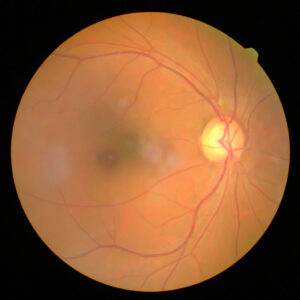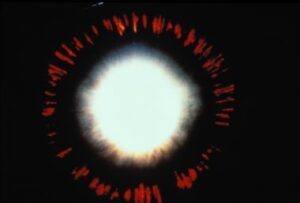- +91 9321883463
- drruchikaeyeclinic@gmail.com
- Mon - Fri: 9:00 - 18:30
DIFFERENT TYPES OF GLAUCOMA


Glaucoma is a serious eye condition that is generally characterized by damage to the optic nerve that causes gradual vision loss. People who have high eye pressure are at a higher risk for glaucoma.
The majority of cases result from elevated pressure inside the eye called intraocular pressure or IOP. However, other conditions such as trauma to the eye or reduced blood flow can also lead to glaucoma. There are several types of glaucoma known. The major types are either categorized as open-angle or angle-closure.
Open-Angle Glaucoma

Open-angle is caused by the slow clogging of the drainage canals which increases eye pressure. The slow draining fluid creates pressure that pushes on the optic nerve. This causes a gradual rise in intraocular pressure that slowly leads to peripheral or side vision loss, before eventually affecting central vision.
There are often no early signs or symptoms of the condition and many people are unaware they have glaucoma until the advanced stages of the disease. Open-angle glaucoma is also called primary or chronic glaucoma.
Angle-Closure Glaucoma

Angle-closure glaucoma is not as as common as Open-angle glaucoma. It is caused by blocked drainage canals which result in a sudden rise in intraocular pressure.
This condition develops very quickly and has noticeable symptoms. However, this condition must be treated immediately. Angle-closure glaucoma is also called acute glaucoma or narrow-angle glaucoma.
Normal-Tension Glaucoma

Normal-tension glaucoma is when people with ‘normal’ eye pressure develop optic nerve damage. Also called low-tension or normal-pressure glaucoma, the cause of this condition is still not understood. People often have no symptoms until the advanced stages of the disease as with open angle glaucoma.
Congenital Glaucoma

Congenital Glaucoma develops in babies with incomplete development of the eye’s drainage canals during the prenatal period. Though it is a rare condition, it could be treated successfully in most cases with medication and surgery.
In conclusion, each type of glaucoma is different and most of them do not show early symptoms. Hence it is important to get one’s eyes tested regularly, especially if you are at a higher risk.
Secondary Glaucoma

When the increase in IOP is due to a known external cause such as injury, inflammation or diseases etc. it is called Secondary Glaucoma. It can be of the open-angle or angle-closure type and it can occur in one or both eyes. The examples include Neovascular Glaucoma, Pigmentary Glaucoma, Exfoliative Glaucoma and Uveitic Glaucoma among others.
Neovascular Glaucoma

It is caused by the abnormal formation of new blood vessels on the iris and over the eye’s drainage channels. The new blood vessels block the eye’s fluid from exiting through the drainage canals causing an increase in eye pressure. The condition is often associated with diabetes.
Exfoliative Glaucoma

This happens in people with exfoliation syndrome which is a condition that causes extra material to detach from parts of the eye. The flaky material peels off the outer layer of the lens within the eye and collects at the angle between the cornea and iris. This clogs the drainage system of the eye, causing eye pressure to rise. It is also called pseudoexfoliative glaucoma.
Pigmentary Glaucoma

Pigmentary Glaucoma occurs when the pigment from the iris flakes into the clear fluid produced inside the eye. This causes blocking of the drainage canals in the eye causing eye pressure to rise.
Uveitic Glaucoma

Uvea is the middle layer of the eye and Uveitis is swelling and inflammation of the uvea. This causes the eye pressure to build up. Sometimes the medication to treat the inflammatory process itself could cause the pressure to build up.
Traumatic Glaucoma

An Injury to the eye could cause traumatic glaucoma. It can occur immediately after the injury or could also develop later.
